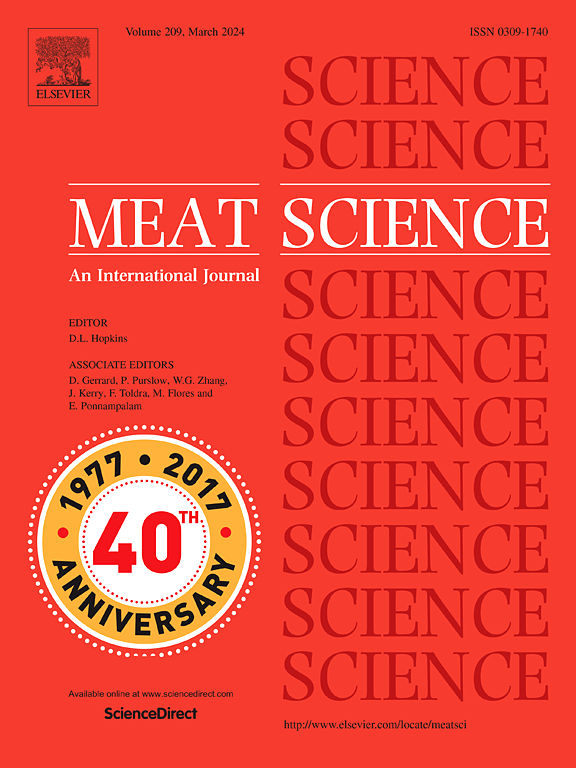特征研究探索与深加工、pH值、颜色和糖原含量相关的因素:系统的制图回顾
IF 6.1
1区 农林科学
Q1 Agricultural and Biological Sciences
引用次数: 0
摘要
这篇系统的图谱综述旨在确定研究趋势、知识集群和空白,探讨饲养肉牛的死前因素(如牛管理、活畜特征、环境)与深色切割、pH值、肉色和糖原含量之间的关系。检索了四个数据库(Agricola, CAB Abstracts, Medline, Web of Science),经过严格的筛选过程,460篇同行评议的研究被纳入最终分析。使用系统评价软件提取和合成数据,并使用证据缺口图将数据可视化。研究结果显示,喂养策略是最常被研究的干预措施,但许多研究包括但不限于年龄、性别、阶层、交通、工厂管理和天气等多种因素。肉色和pH值是研究中最常见的参数,而糖原含量和黑切发生率的直接测量的研究则不太常见。地理位置影响了研究的重点,对特定品种的研究集中在其原产地。这篇综述强调需要进行更大规模的观察性研究,以了解导致暗切割的各种因素之间复杂的相互作用。这张系统的地图为研究人员和利益相关者提供了宝贵的资源,确定了未来研究的关键领域,并有助于减少黑切牛肉的发病率。本文章由计算机程序翻译,如有差异,请以英文原文为准。
Characterizing research exploring factors associated with dark cutting, pH, color, and glycogen content in beef from grain-finished or feedlot-fed cattle: A systematic mapping review
This systematic mapping review aimed to identify trends, knowledge clusters, and gaps in research exploring the relationship between antemortem factors (e.g., cattle management, live animal characteristics, environment) and dark cutting, pH, meat color, and glycogen content in fed beef cattle. Four databases (Agricola, CAB Abstracts, Medline, Web of Science) were searched, and 460 peer-reviewed studies were included in the final analysis after a rigorous screening process. Data were extracted and synthesized using systematic review software and visualized using evidence gap maps. The review revealed that Feeding strategies were the most frequently studied intervention but many studies included multiple factors including but not limited to Age, Sex Class, Transportation, Plant Management, and Weather. Meat color and pH were the most frequently included parameters across studies while research on glycogen content and direct measures of dark cutting incidence was less common. Geographic location influenced the focus of research, with studies on specific breeds concentrated in their regions of origin. The review highlights the need for larger, observational studies to understand the complex interplay of factors contributing to dark cutting. This systematic map provides a valuable resource for researchers and stakeholders, identifying key areas for future research and contributing to efforts to reduce the incidence of dark cutting beef.
求助全文
通过发布文献求助,成功后即可免费获取论文全文。
去求助
来源期刊

Meat Science
工程技术-食品科技
CiteScore
12.60
自引率
9.90%
发文量
282
审稿时长
60 days
期刊介绍:
The aim of Meat Science is to serve as a suitable platform for the dissemination of interdisciplinary and international knowledge on all factors influencing the properties of meat. While the journal primarily focuses on the flesh of mammals, contributions related to poultry will be considered if they enhance the overall understanding of the relationship between muscle nature and meat quality post mortem. Additionally, papers on large birds (e.g., emus, ostriches) as well as wild-captured mammals and crocodiles will be welcomed.
 求助内容:
求助内容: 应助结果提醒方式:
应助结果提醒方式:


